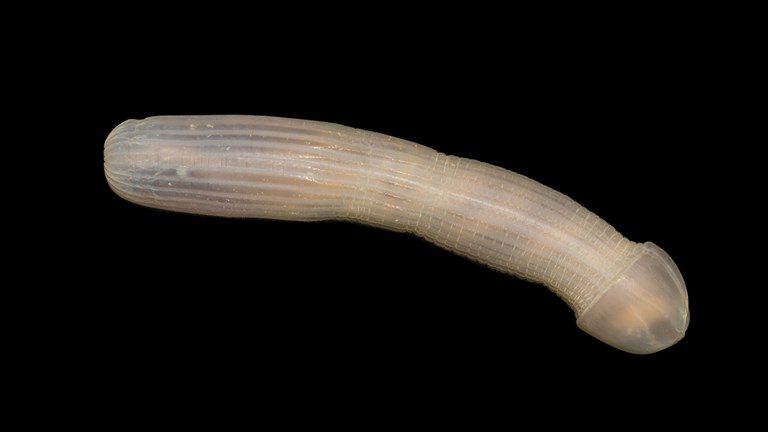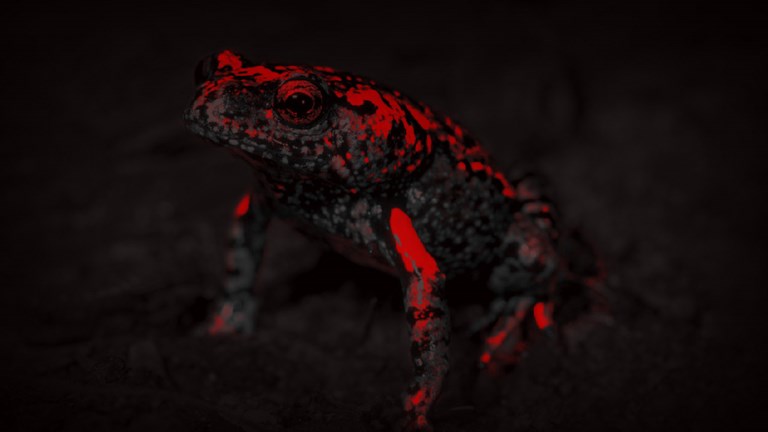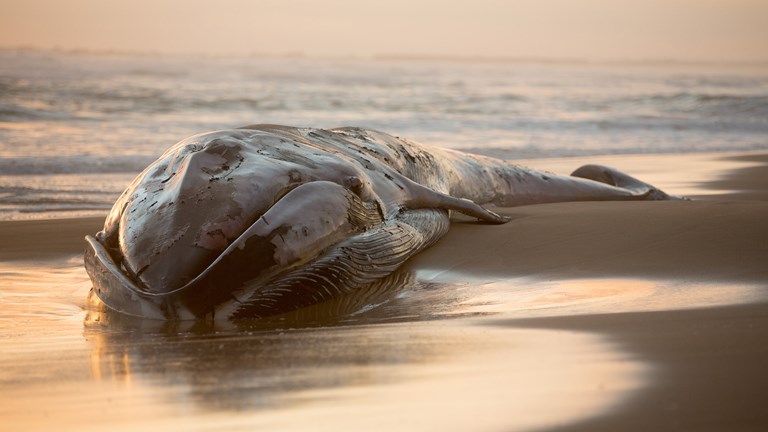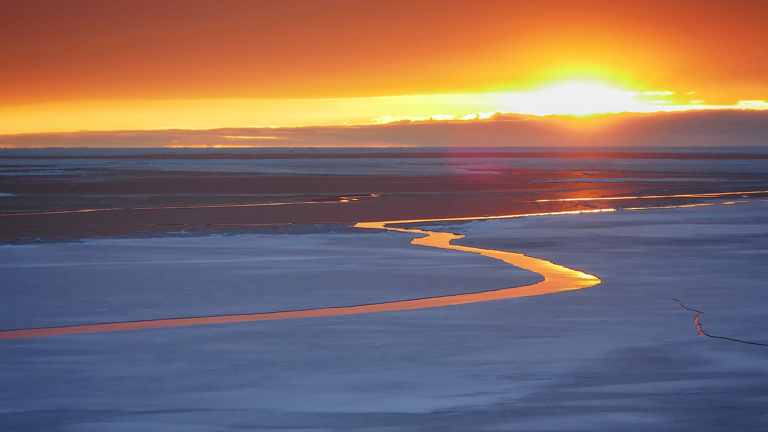Science:
Subtopics

Where land meets sea: The power of coastal ecosystems
Flourishing at the frontier between land and sea, discover how coastal environments cool our planet, help ocean ecosystems thrive, and have ancient connections with Tasmania’s First Peoples.

Why our planet’s climate depends on its darkest depths
Hidden beneath the waves, in a part of the world most of us will never see, lie the lowest valleys of the seafloor.

600 Million Years: Victoria Evolves
How did life on Earth come to be the way it is and what happened in our part of the world?

Discover Documentary: Deep Sea
Scientists are only just starting to uncover what lives in the deepest parts of the world's ocean. Find out about some of the weirdest and most wonderful with Dr Martin Gomon, Curator of Ichthyology and Melanie MacKenzie, Collection Manager of Marine Invertebrates.

Melbourne's annual congregation of Giant Spider Crabs
Every year, thousands of Giant Spider Crabs congregate in Port Phillip Bay ahead of their annual winter moult.

Blue-ringed Octopus
Small but deadly, this animal runs rings around the competition.

Creature of the deep
Its evocative appearance is not the only thing that makes this deep sea creature fascinating and important.

Victoria's nudibranchs
The butterflies of the sea.

Cephalopod Catalogue
Third and final volume by MV scientists now available

Whale vs shark
Evidence of shark bite 24 million years ago.

Sea anemone feast
Ever bitten off more than you can chew?

Ancient whales had more bite than today’s gentle giants
The cutting edge of whale evolution.

Northern exposure: fossils of a southern whale found for the first time in the north
A totally unexpected discovery.

Putting names to faceless fishes from the abyss
Understanding which fish species occur where, and discovering new fish species, is the starting point to managing marine biodiversity.

A treasure trove of freshwater fish biodiversity
The Kimberley region in Australia’s northwest is one our last great pristine unspoilt places, and a hotspot for species discovery.

Eulogy for a seastar, Australia’s first recorded marine extinction
Today, I am writing a eulogy to the Derwent River Seastar (or starfish), that formerly inhabited the shores near the Tasman Bridge in Hobart, Tasmania.

The trials and triumphs of a trailblazing scientist
Hope Macpherson was a woman who broke barriers.

Under fire: The animals threatened by Australia’s bushfire crisis

What is the most venomous animal in the world?
And how its deadly venom could save lives.

Rare fossil tooth find sheds a light on Australia’s distant past

Who’s digging in my lawn?
Learn about land crayfish and their burrows.

The puzzle of Melbourne’s small and ancient seals
‘Landmark’ study rewrites the history of seals in southern Australia thanks to fragmentary fossils washed up on a Melbourne beach.

Nemo found: new species of dancing peacock spider named
Meet the newest dancing peacock spider, Maratus nemo.

Jurassic relict: a new family of Brittle Stars
Long-armed and bristling with teeth, this Brittle Star is a marine relict.

Investigating the IOT: deep-sea science
A journey into Australia's unexplored deep-sea Indian Ocean Territories.

Faceless Fish and the deep-sea voyages that found it
Take a dive into the deep sea with the Faceless Fish.

A Lord of the Rings-like marine landscape revealed in Australia’s Christmas Island Territory
Take a dive into a Lord of the Rings-inspired seascape.

Glowing animals: understanding bioluminescence and biofluorescence
What do a Platypus, a Dragonfish and a Scorpion all have in common?

A Japanese Devilray, far from home
Collecting the first Victorian record of the Japanese Devilray.

10 really big things in the Museums Victoria State Collection
With millions of objects to choose from, what are the some of the biggest things?

Why are there so many whale skeletons in museums?
Whales grace the halls of many a natural history museum, but they are there for more than just show.

New species of squat lobster helping to revive an Aboriginal language
How the naming of a new species of squat lobster has helped an Aboriginal community reconnect to its ‘sleeping’ language.

How do deep-sea creatures survive in the crushing dark?
Meet some of the weird and wonderful animals that have adapted to life in the deep sea.

Recovering a rarity: what happens when a dead Fin Whale washes ashore?
The stranding of a dead whale offers scientists a rare opportunity to study these elusive giants.

More Australian species added to the endangered list
Without action, museum collections may be the only evidence some of these endangered species existed.

Lunar New Year: 10 Australian tigers
Think you know tigers? What about those found in Australia?

Jan Watson: diving into the unknown
One of Australia’s first scientific divers, Dr Jan Watson used her tenacity, skill, and passion to realise her underwater ambitions.

Rhyll Plant: sowing the seeds of scientific art
Half a century as a scientific artist has taken Rhyll Plant to some unexpected places, but where did it all begin?

The mighty Muirfield Seamount
From ship slayer to protected wonderland, the Muirfield Seamount has a long history of surprising seafarers.

Lunar New Year
This Lunar New Year, come for a tour of the Chinese Zodiac through the Museums Victoria collection.

A glimpse into the past, to enlighten the future of biodiversity on Earth
What can we learn from the first scientific descriptions of animals and the Earth’s biodiversity, written hundreds of years ago?

Reproduction can be a lonely task for a deep sea fish
What does it take to reproduce in the cold, dark and lonely world of the deep sea?

What’s in a name? An animal’s can be misleading
When is a tiger not a cat, a fox not a canine, and a jelly fish not a fish? Unfortunately, more often than you might think.

19-million-year-old fossil jaw bone hints the biggest whales first evolved somewhere unexpected
A newly described fossil from South Australia is making waves in our understanding of where and when whales evolved titanic body sizes.

How sea ice helps us keep our cool
It may seem like a distant frozen corner of our globe, but the sea ice is important not just for the organisms that live amongst it, but for the entire planet.

What can I find on the beach?
Victoria’s beaches are wondrous environments. Get to know the biodiversity of your local coast and see if you can find these 10 things on the beach.

Five arms, no heart and a global family
What DNA revealed about the weird deep-sea world of brittle stars

Help us document biodiversity – record your own sightings

Sampling the Abyss
The Sampling the Abyss voyage, 15 May–16 June 2017






